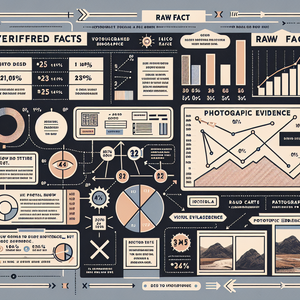The Gender Pay Gap in Product Ownership

The gender pay gap refers to the average difference in pay between men and women in the workforce. According to a report from the World Economic Forum, women globally earn about 63% of what men earn for similar roles, with the gap only narrowing marginally in recent years. In the tech industry, specifically, women are underrepresented in leadership positions, which exacerbates the pay gap. The question is: how does this disparity manifest in product ownership?
Statistics Revealing the Disparity
Recent studies have shown that women in product owner roles earn significantly less than men. According to a survey conducted by PayScale, female product owners earn approximately 10-20% less than their male peers, with the gap widening for senior positions. For instance, while a male product owner might earn an average of $120,000 annually, a female product owner with similar qualifications and responsibilities may earn only $100,000. This disparity is not limited to salaries; it also extends to bonuses and stock options, further contributing to the overall compensation gap. Moreover, a study by the National Center for Women & Information Technology (NCWIT) revealed that women in tech-related roles, including product ownership, are less likely to receive promotions and raises compared to men. This trend perpetuates the cycle of inequality and highlights the need for systemic change within organizations.
Personal Stories and Experiences
To provide a nuanced perspective on the gender pay gap in product ownership, it’s essential to hear from those directly affected. Many women have shared their experiences of wage discrimination and the challenges they face in negotiating salaries. For example, Sarah, a product owner with five years of experience, discovered that her male colleague, who had a similar role and experience level, was earning significantly more. Despite her efforts to negotiate a raise, she felt her requests were often dismissed or undervalued. Another individual, Maria, shared her journey of transitioning from a junior product owner to a senior position. Despite her qualifications and successful projects, she faced obstacles when it came to salary negotiations. “I often felt like I had to work twice as hard to prove my worth,” she explained. These stories underscore the personal impact of the gender pay gap, revealing that it goes beyond numbers—it affects confidence, career growth, and overall job satisfaction.
Potential Solutions for Equity
Addressing the gender pay gap in product ownership requires a multifaceted approach. Organizations must implement transparent pay practices to ensure that salaries are equitable and based on merit rather than gender. This transparency can take the form of publicly available salary ranges for each role, which can help to mitigate discrepancies during negotiations. Providing negotiation training for women can empower them to advocate for their worth confidently. Research indicates that women often feel less comfortable negotiating salaries compared to men, which can perpetuate the pay gap. Workshops and resources aimed at improving negotiation skills can make a significant difference. Mentorship programs and sponsorship initiatives can also play a crucial role in promoting women into leadership positions within product management. By fostering an inclusive culture and actively seeking to dismantle biases, companies can create a more equitable environment for all employees. Mentors and sponsors can provide guidance, share insights, and advocate for women’s advancement within the organization. Moreover, regular pay audits can help organizations identify and address disparities in compensation. By tracking salaries, bonuses, and promotions across genders, organizations can ensure that all product owners are compensated fairly for their contributions. Implementing corrective measures based on audit findings is essential for fostering an equitable workplace.
The gender pay gap in product ownership is a significant issue that demands attention. While statistics reveal a troubling disparity in salaries between men and women, personal stories highlight the human impact of this inequity. By implementing transparent pay practices, providing negotiation training, and fostering mentorship opportunities, organizations can take meaningful steps toward closing the gap. Ultimately, striving for equality within product ownership not only benefits individuals but also enhances team dynamics, innovation, and overall organizational success. As we move forward, it is imperative that we champion equity in the workplace and ensure that all product owners, regardless of gender, are recognized and rewarded fairly for their invaluable contributions. Addressing this issue is not just a moral obligation but a strategic necessity for the advancement of the industry as a whole.
Senior Product Owner
Tech companies like Google, Amazon, and Microsoft
Core Responsibilities
Define and communicate the product vision and roadmap to stakeholders.
Prioritize product backlogs based on immediate market needs and strategic goals.
Collaborate closely with engineering, design, and marketing teams to ensure smooth product launches.
Required Skills
Strong experience in Agile methodologies and tools (e.g., JIRA, Scrum).
Excellent communication and leadership skills to drive cross-functional collaboration.
Ability to analyze market trends and customer feedback to inform product decisions.
Technical Product Owner
Companies such as IBM, Salesforce, and smaller tech startups
Core Responsibilities
Serve as the liaison between technical development teams and business stakeholders.
Translate complex technical requirements into actionable user stories and specifications.
Ensure the product aligns with technical feasibility and scalability.
Required Skills
Proficiency in software development principles and familiarity with programming languages (e.g., Python, Java).
Strong analytical skills with the ability to assess technical risks and impacts.
Experience in cloud technologies and platforms (e.g., AWS, Azure).
Product Owner for Data Products
Data-centric companies like Palantir, Tableau, and various fintech firms
Core Responsibilities
Define product strategy and vision for data-driven applications and tools.
Collaborate with data scientists and analysts to prioritize data feature development.
Ensure compliance with data governance and privacy regulations in product design.
Required Skills
Strong understanding of data analytics, machine learning, and big data technologies (e.g., SQL, Hadoop).
Experience with product analytics tools to track user engagement and product performance.
Ability to interpret complex data sets and communicate insights to non-technical stakeholders.
Product Owner for E-commerce Platforms
Major retail brands like Walmart, Target, and online marketplaces like Etsy
Core Responsibilities
Lead product development for online shopping experiences, ensuring customer satisfaction and retention.
Analyze user behavior and transaction data to optimize the purchasing journey.
Collaborate with marketing and UX teams to enhance site functionality and performance.
Required Skills
Experience with e-commerce platforms (e.g., Shopify, Magento) and payment processing systems.
Knowledge of SEO, digital marketing strategies, and user experience best practices.
Strong project management skills and familiarity with tools like Trello or Asana.
Agile Product Owner
Companies adopting Agile methodologies, such as Accenture, Capgemini, and various software development firms
Core Responsibilities
Act as a key stakeholder for Agile teams, ensuring that user stories are clearly defined and prioritized.
Facilitate sprint planning, reviews, and retrospectives to drive continuous improvement.
Maintain a dynamic product backlog that reflects changing business priorities and user needs.
Required Skills
Certification in Agile frameworks (e.g., Certified Scrum Product Owner - CSPO).
Strong facilitation and negotiation skills to manage stakeholder expectations.
Experience with Agile project management tools (e.g., Azure DevOps, Rally).


